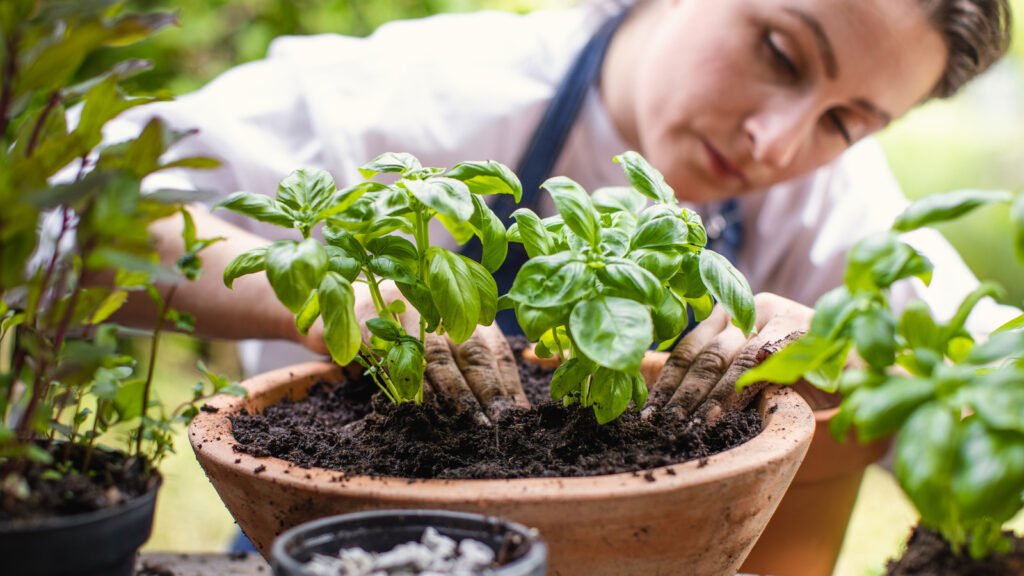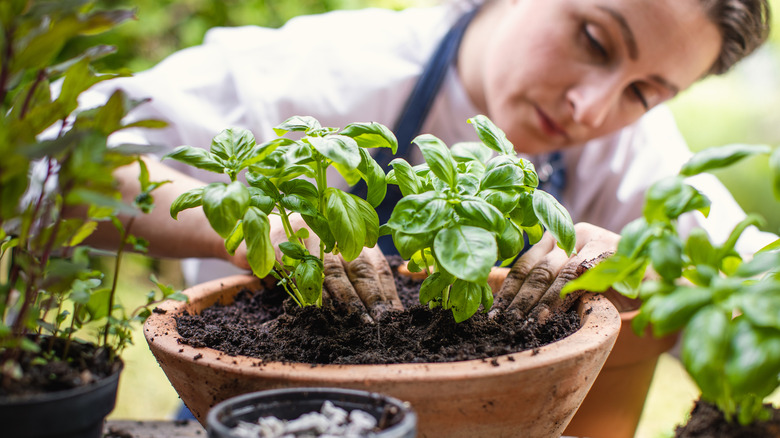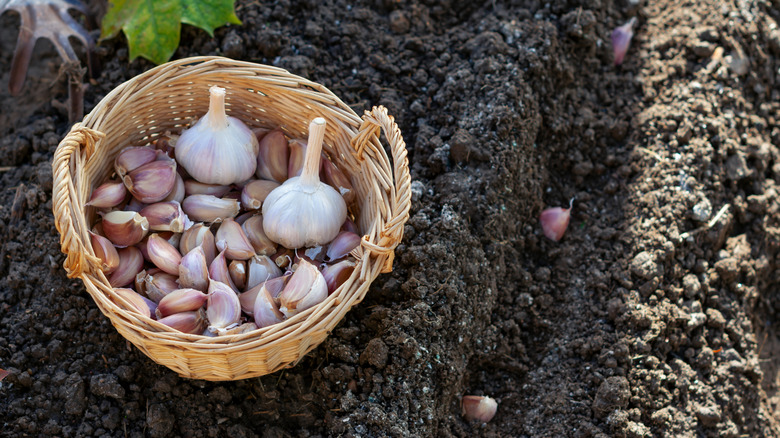Have you ever bought a basil plant with the most valiant of intentions and then killed it near-immediately? Yeah, us too. From needing near-daily watering, to being a tempting treat for many insects and rodents, there’s quite a myriad of rookie mistakes that can cause your DIY indoor herb garden to fail before it’s ever really begun. But what if we told you the solution to your green thumb woes is actually to grow yet another plant? Not just any plant at that: For healthy and tasty homegrown basil, you’ll want to plant garlic next to it.
As it turns out, companion planting, a process that involves growing different kinds of plants next to each other in a strategic way, has been used for centuries as an effective gardening technique. Think about the way that the Iroquois and Cherokee people planted the Three Sisters, otherwise known as corn, bean, and squash, in the same plots. Beans are able to fertilize the soil for corn and squash via a natural nitrogen fixing mechanism, simultaneously being supported by the corn as they wind around the thick stalks. Meanwhile, the horizontally-spreading squash leaves choke out weeds on the ground, retaining soil nutrients for the corn and beans. Together, they produce a better harvest. The same is true when it comes to basil and garlic. There are many companion plants that thrive alongside the popular herb, but garlic’s strong scent helps deter aphids, beetles, and other small insects, and may even keep squirrels and rabbits from munching on your garden plot — and some say the close proximity of the bulb can even improve your basil’s flavor.
Why this works and how to do it yourself
Admittedly, not everyone agrees on the extent to which planting these two together will enhance basil’s flavor. But some do suggest that garlic as a companion can improve the flavor of some plants, including basil. And if nothing else, the practical aspect of protection from pests allows basil to grow in a more abundant, full, and healthy way, which inherently lends itself to a better-tasting plant. Beyond that, biodiversity, even in your small garden plot, can create better, more nutrient-rich soil that will better feed and nourish your basil and garlic plants.
If you’re ready to bust open the potting soil and get started on home-growing the ingredients for a traditional pine nut pesto, here are some tips. First, be aware of plant spacing. Even though you do want the plants nearby, roots need a lot of space to grow — basil plants, for example, like to have around four to eight inches of room horizontally, and garlic likes to have at least six. Place the garlic around two inches deep, and then prepare to have your patience tested, since the bulbs take about eight months to reach full maturity. You’ll want to start them in the fall, and then add in your basil seedlings after the last frost in late spring, somewhere with bright, full sun. If you’re feeling curious and want to test the flavor theory for yourself, try planting one basil plant with garlic nearby and one without. But if you do go the companion planting route, you’ll get an added bonus before the full harvest is ready — even before the garlic bulbs are fully-grown, you can cook with curly garlic scapes that grow out of the ground first for a nice slice of flavor.





